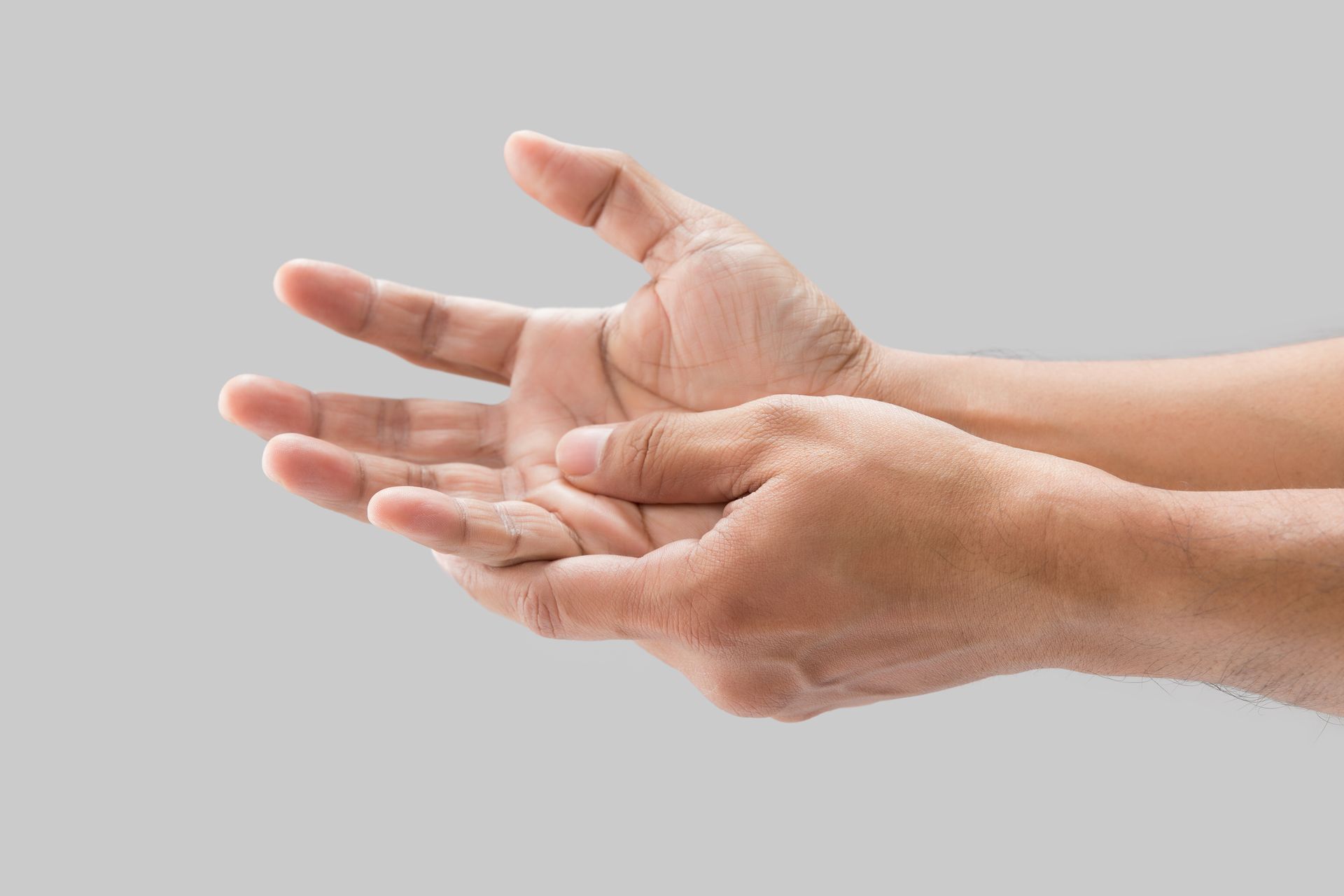Cubital Tunnel Syndrome Treatment in Baton Rouge
What is Cubital Tunnel Syndrome?
There are three main nerves that run through the arm. One of these is the ulnar nerve which runs from the shoulder to the hand, passing through a tunnel of bone, muscle and ligament at the elbow known as the cubital tunnel. This nerve gives feeling to the pinky and half of the ring finger. It also helps with fine movement of small muscles in the hand and some of the larger muscles in the forearm. While the nerve can be compressed at various points throughout the arm such as the shoulder or wrist, ulnar nerve entrapment is most common at the elbow.
What Causes Cubital Tunnel Syndrome?
The most common cause of cubital tunnel syndrome is repeated bending of the elbow. This may be the result of a job or sport that requires pulling, reaching, or lifting motions. Other factors that may contribute to the development of cubital tunnel syndrome include frequently leaning on the elbow, arthritis, bone spurs, or prior injury to the elbow such as fracture or dislocation. Any of these can result in compression of the ulnar nerve, causing the hallmark symptoms associated with cubital tunnel syndrome.
What are the Symptoms of Cubital Tunnel Syndrome?
When the ulnar nerve becomes compressed, it can lead to some unpleasant and even painful symptoms. Among the most commonly reported symptoms of cubital tunnel syndrome are:
- Numbness and tingling in the pinky and ring fingers. This symptom may come and go depending on the position of the elbow and is most common when the elbow is bent. Sleeping with the elbow in a bent position can aggravate many cubital tunnel syndrome symptoms.
- Problems with finger coordination and fine motor movements, particularly involving the pinky and ring fingers.
- Weakening of the grip and clumsiness in the affected hand and arm due to weakening of the muscles.
- Pain located at the inside of the elbow that is typically aching in nature.
How is Cubital Tunnel Syndrome Diagnosed?
A physician can get a good idea of the presence of cubital tunnel syndrome through a thorough medical history (including work and lifestyle factors) and physical examination. Additionally, diagnostic tests such as the following may be used?
- Nerve Conduction Test – This test uses electrode patches placed along the arm to stimulate the ulnar nerve and determine how quickly signals are traveling along it. In turn, doctors are able identify any potential areas of blockage or compression.
- X-ray – If it is suspected that you are suffering from cubital tunnel syndrome due to arthritis or bone spurs in the elbow, and x-ray can help confirm the diagnosis.
Non-Surgical Treatments for Cubital Tunnel Syndrome
Treatment for cubital tunnel syndrome will depend on both the cause and severity of nerve compression. In many cases, non-surgical treatment options are sufficient to address the concern and bring relief. Commonly used treatments include:
- Nonsteroidal Anti-Inflammatory Drugs (NSAIDs) – NSAIDs can help alleviate symptoms by reducing swelling in and around the elbow that leads to nerve compression.
- Bracing / Splinting – A padded brace or splint may be prescribed to help keep the elbow straight during the night, a time when symptoms tend to worsen.
- Physical Therapy – Physical therapists may be able to institute specific, nerve-gliding exercises that can help the ulnar nerve begin to move more easily through the cubital tunnel.
Surgical Treatments for Cubital Tunnel Syndrome
In severe cases where non-surgical treatments have failed or muscle weakness has begun to occur, surgical intervention may be needed to correct cubital tunnel syndrome. There are three potential surgeries used for the condition:
- Cubital Tunnel Release - This surgery is performed by cutting the ligament that serves as the “roof” of the cubital tunnel. In turn, the tunnel widens enough to allow the ulnar nerve to pass through comfortably. As the ligament heals, this space will maintain its new, larger size.
- Ulnar Nerve Anterior Transposition – Normally, the ulnar nerve sits behind a bony ridge known as the medial epicondyle. In some cases, problems arise when the nerve gets caught on this ridge during normal movement of the elbow. This procedure corrects the problem by relocating the ulnar nerve to the front of the medial epicondyle.
- Medial Epicondylectomy – If the medial epicondyle is the problem, a second surgical option is to remove part of the bony structure. This too will prevent the nerve from getting caught as it glides back and forth.
Cubital Tunnel Syndrome Specialists in Baton Rouge
RELATED READING





